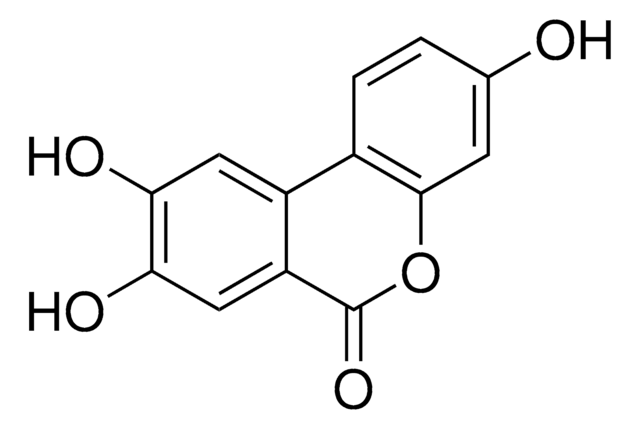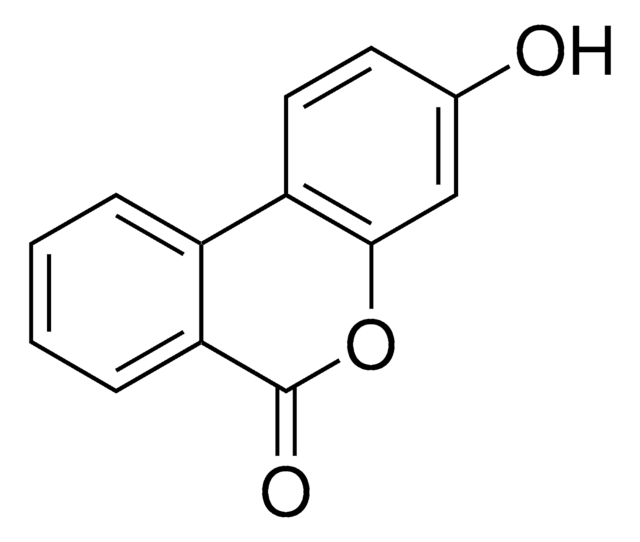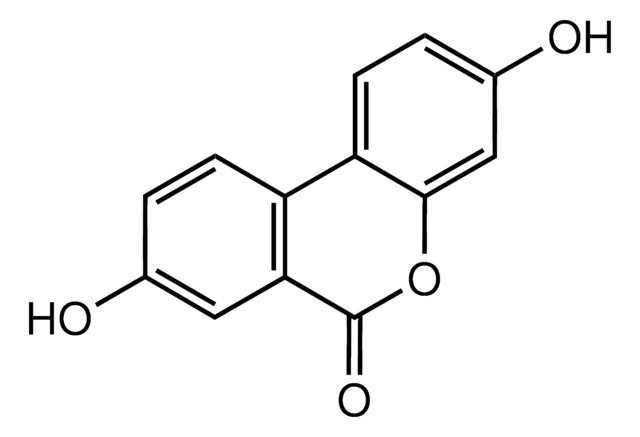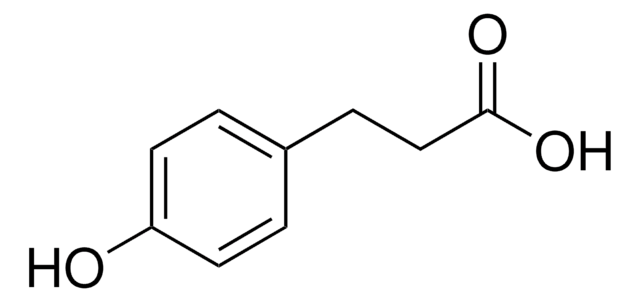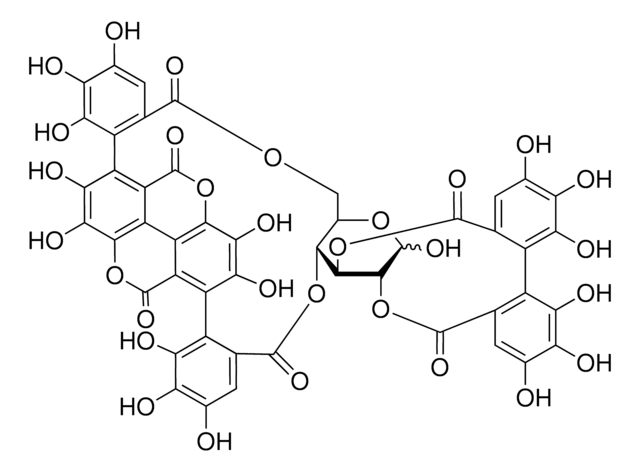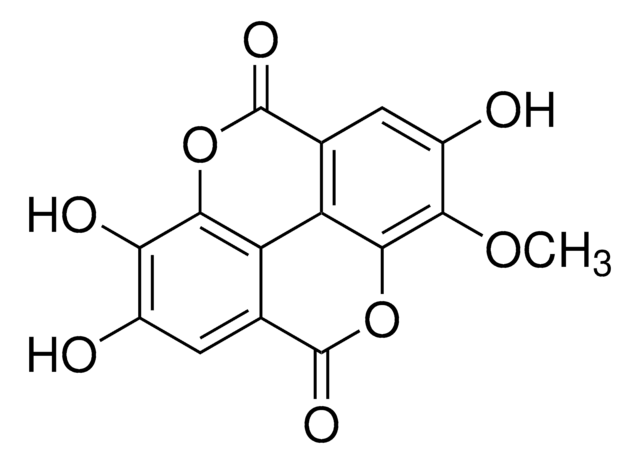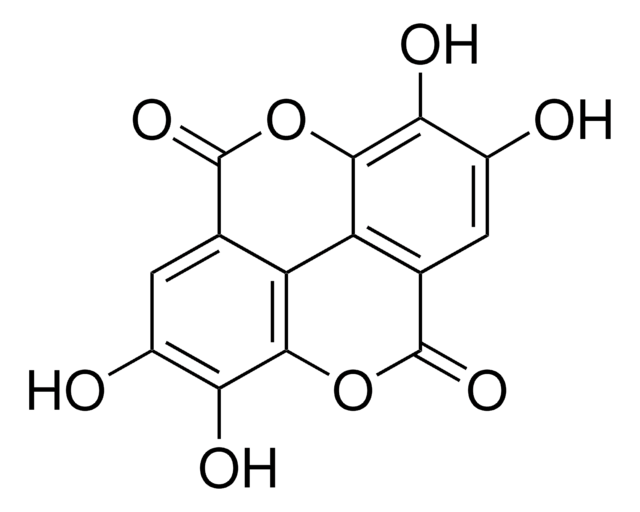おすすめの製品
アッセイ
95% (HPLC)
品質水準
フォーム
solid
mp
>227 °C
保管温度
2-8°C
SMILES記法
[o]1c2c(c3c([c]1=O)cc(c(c3)O)O)ccc(c2O)O
InChI
1S/C13H8O6/c14-8-2-1-5-6-3-9(15)10(16)4-7(6)13(18)19-12(5)11(8)17/h1-4,14-17H
InChI Key
NEZDQSKPNPRYAW-UHFFFAOYSA-N
詳細
Urolithins are microflora human metabolites of dietary ellagic acid (EA) derivatives, such as ellagitannins (ETs). They are produced in the human gut, and found in urine in the form of urolithin B glucuronide after absorption of ellagitannins-containing food such as pomegranate, strawberries, red raspberries, walnuts or oak-aged red wine. During intestinal metabolism by bacteria, ellagitannins and punicalagins are converted to urolithins.
アプリケーション
Metabolomics research
その他情報
For additional information on our range of Biochemicals, please complete this form.
保管分類コード
11 - Combustible Solids
WGK
WGK 3
引火点(°F)
Not applicable
引火点(℃)
Not applicable
適用法令
試験研究用途を考慮した関連法令を主に挙げております。化学物質以外については、一部の情報のみ提供しています。 製品を安全かつ合法的に使用することは、使用者の義務です。最新情報により修正される場合があります。WEBの反映には時間を要することがあるため、適宜SDSをご参照ください。
Jan Code
SMB01339-VAR:
SMB01339-BULK:
SMB01339-25MG:
SMB01339-5MG:
最新バージョンのいずれかを選択してください:
Adrián Cortés-Martín et al.
Journal of agricultural and food chemistry, 68(45), 12606-12616 (2020-11-03)
The maternal-infant transmission of several urolithins through breast milk and the gut colonization of infants by the urolithin-producing bacterium Gordonibacter during their first year of life were explored. Two trials (proof-of-concept study: n = 11; validation study: n = 30)
Kristen M Roberts et al.
Molecular nutrition & food research, 64(10), e1900800-e1900800 (2020-03-01)
Black raspberry (BRB) phytochemicals demonstrate anti-carcinogenic properties in experimental models, including prostate cancer. Two BRB foods, a confection and nectar, providing a consistent and reproducible product for human clinical studies are designed and characterized. Men with clinically localized prostate cancer
ライフサイエンス、有機合成、材料科学、クロマトグラフィー、分析など、あらゆる分野の研究に経験のあるメンバーがおります。.
製品に関するお問い合わせはこちら(テクニカルサービス)